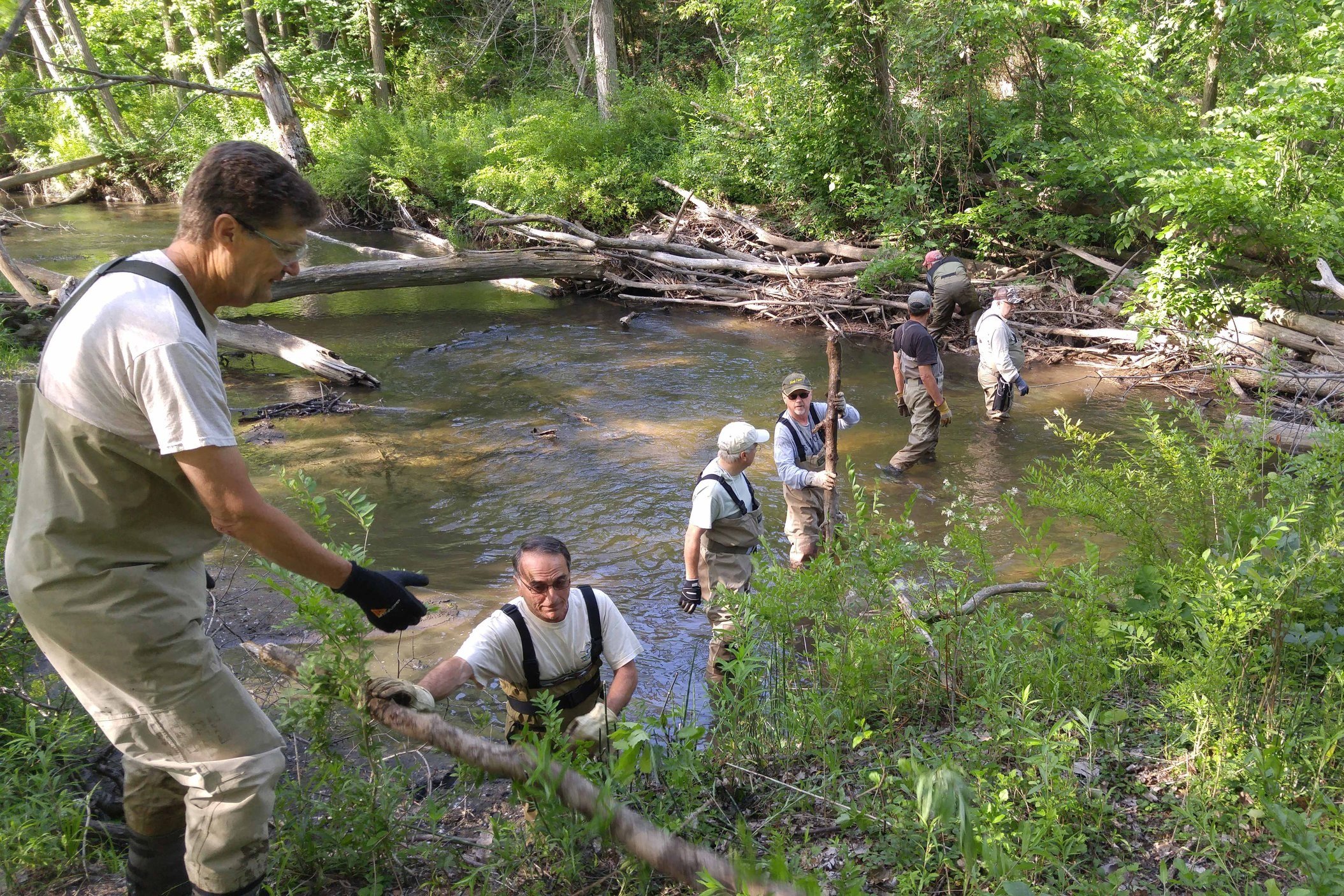
Clinton River Coldwater Conservation Project
Freshwater resources are indispensable for healthy wetlands, streams, rivers, and lakes, and the coldwater tributaries are essential habitats for preserving the biodiversity of native plants and wildlife.
The Clinton River Coldwater Conservation Project (CRCCP) aims to generate public support for the Clinton River watershed as a valued recreational resource through data collection and efforts to improve water quality, aesthetics, and access to the Clinton River and primarily its coldwater tributaries.
CONCERNS FOR COLDWATER TRIBUTARIES, CREEKS BROOKS & STREAMS
While land development, sewer overflows, and poor agricultural practices have negative effects on the overall watershed, the ecosystems of coldwater streams can face unique threats. Coldwater tributaries can be damaged by blocked upstream passages, the loss of natural areas, removal of shade from streambanks, and a reduction of instream habitat, all of which increase the water’s temperature, acidity, sediment, and bacteria levels.
RESTORING & PROTECTING OUR COLDWATER TRIBUTARIES
The Clinton River Watershed provides many angling opportunities for coldwater fish, including native brook trout. Since 2005, the CRCCP’s goal is to enhance, restore, and create instream and streamside trout habitat.
Today, CRCCP volunteers continue their work to improve our local fishery resources with multiple large woody debris and trash clean-ups as well as fishing access and streambank habitat-related projects taking place. These projects will have positive effects on our watershed for many years to come. To learn more about fishing on the Clinton River Watershed click here!
PAINT CREEK GAUGE
In 2022, thanks to the efforts of program partners and financial contributions from Clinton Valley Trout Unlimited, CRWC coordinated the installation of a continuous water quality monitoring system in Paint Creek. Located in downtown Rochester, this system provides real time water quality data from Paint Creek, one of the last remaining coldwater trout streams in southeast Michigan. Data from the system is open for anyone to view and can be found online, Click here!

-
A tributary is a freshwater stream that feeds into another river, rather than ending in a lake, pond, or ocean. A tributary can be the size of the smallest of headwater streams to a smaller river that eventually feeds into the larger or parent river.
-
Tributaries are a fundamental part of a watershed and provide important ecological functions such as spawning, rearing, and refuge habitats for wildlife, particularly coldwater fish. Warm water temperatures are a known factor in limiting the survival and distribution of salmon, trout, and charr.
The presence of coldwater creeks and streams feeding into warm, downstream waters creates cold-water patches that provide critical, thermal sanctuaries for coldwater fish and sustain wild populations that would otherwise be unable to survive through the dry summer months.
-
The temperature in a coldwater tributary is protected by the shade of matured trees and dense vegetation along the streambank, and seasonal streams also contribute important ecological functions even when dry. This can occur when a colder, sub-surface flow discharges from "dry" tributary channels into warm, downstream perennial streams and rivers that create cold-water patches.
-
During the 1950’s, the headwaters of the North Branch were once regularly stocked with brook trout, but the management was terminated likely due to inaccessibility, the small stream size, and extensive private property. However, self-sustaining populations of the native brook trout have been rediscovered in what was once known as the “up north country” to local residents.
Where the North Branch begins in Almont and Bruce Township, portions of the river are much smaller and offer just the right conditions for sensitive brook Trout to survive. The wetlands, groundwater, and heavily shaded banks keep the water temperatures in the low 60s, and the glacial material throughout the landscape provides the river with a gravel and cobble bottom. These conditions led the State to classify the North Branch and its tributaries above 32 Mile Road as designated trout streams.
CRWC and Michigan DNR Fisheries are now monitoring the water quality, stream habitat conditions and the brook Trout populations within the headwaters of the North Branch. By collecting new data, CRWC is hoping to learn more about the decline of the brook Trout in other areas of the watershed including Gallagher Creek, a tributary of Paint Creek. The headwaters of Gallagher Creek are located in Oakland Charter Township and once supported healthy populations of brook Trout.
To have high-quality streams that are still home to a wild-reproducing native trout population, the headwaters of the North Branch stand as a testament to what can be achieved when we protect our freshwater resources and natural environment.
Project Partners: City of Auburn Hills, City of Rochester Hills, EGLE, Michigan Department of Natural Resources, Michigan Fly Fishing Club, Oakland County Planning & Economic Development Services, The City of Rochester, and Trout Unlimited




